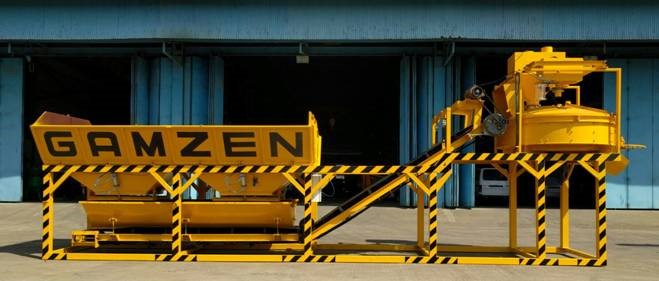Concrete Batching Plants: A Comprehensive Guide to Boosting Efficiency and Quality
In the realm of construction and infrastructure development, the utilization of concrete batching plants stands as a cornerstone for achieving efficiency, precision, and quality. At Gamzen India, we understand the critical role that these plants play in the construction process, and we are here to guide you through the ins and outs of concrete batching plants. In this comprehensive article, we will delve deep into the various aspects of concrete batching plants, from their types and components to their benefits and best practices.
Understanding Concrete Batching Plants
What Are Concrete Batching Plants?
Concrete batching plants, often referred to as concrete mixing plants, are specialized facilities designed for the production of concrete in large quantities. They combine various ingredients, including cement, water, aggregates (such as sand and gravel), and additives, to create the concrete mix required for construction projects.
Types of Concrete Batching Plants
There are several types of concrete batching plants, each tailored to specific construction needs:
- Dry Mix Concrete Plants: These plants pre-mix all the components, except water, and the mixture is transported to the construction site in a dry state. Water is added on-site, which allows for greater flexibility.
- Wet Mix Concrete Plants: Wet mix plants combine all the ingredients, including water, at the plant itself. This results in a consistent and high-quality concrete mix.
- Central Mix Concrete Plants: Central mix plants have all the ingredients mixed thoroughly at a central location. They are known for producing concrete of exceptional quality and uniformity.
- Mobile Concrete Batching Plants: These portable plants can be transported to various job sites, offering flexibility for projects with changing locations.
Components of a Concrete Batching Plant
To comprehend the functioning of concrete batching plants, it is crucial to understand their key components:
1. Aggregate Bins
Aggregate bins store various aggregates, such as sand, gravel, and crushed stone, in separate compartments. These materials are precisely measured and combined to create the desired concrete mix.
2. Conveyor Belts
Conveyor belts transport the aggregates from the bins to the mixing unit, ensuring a consistent flow of materials.
3. Weighing System
Accurate weighing of each ingredient is vital for producing high-quality concrete. Modern batching plants are equipped with advanced weighing systems to ensure precision.
4. Mixing Unit
The mixing unit is the heart of the batching plant. It blends the ingredients thoroughly to create a uniform concrete mix.
5. Cement Silos
Cement silos store the cement powder until it is needed in the mixing process. They protect the cement from moisture and maintain its quality.
6. Control System
An advanced control system automates the entire batching process, ensuring precise measurements and efficient operation.
Benefits of Using Concrete Batching Plants
Concrete batching plants offer numerous advantages to construction projects:
1. Enhanced Efficiency
By automating the mixing process, these plants significantly increase production rates and reduce labor requirements.
2. Improved Quality Control
Consistency in mixing ensures that the concrete meets the desired specifications, leading to higher quality construction.
3. Cost Savings
Efficient batching reduces material wastage and, consequently, project costs.
4. Environmental Benefits
Advanced control systems minimize environmental impact by optimizing resource usage.
Best Practices for Operating Concrete Batching Plants
To make the most of your concrete batching plant, consider the following best practices:
1. Regular Maintenance
Scheduled maintenance and inspections are crucial to ensure the longevity and performance of your plant.
2. Operator Training
Proper training for plant operators is essential to avoid errors and maximize efficiency.
3. Quality Control
Implement stringent quality control measures to consistently produce high-quality concrete.
4. Environmental Compliance
Adhere to environmental regulations and adopt eco-friendly practices in plant operations.
Conclusion
Concrete batching plants are pivotal in modern construction projects, and understanding their types, components, and best practices is essential for achieving success. At Gamzen India, we are dedicated to providing you with the knowledge and expertise required to make the most of your concrete batching plant. By following best practices and optimizing your plant’s performance, you can boost efficiency and quality in your construction projects.

